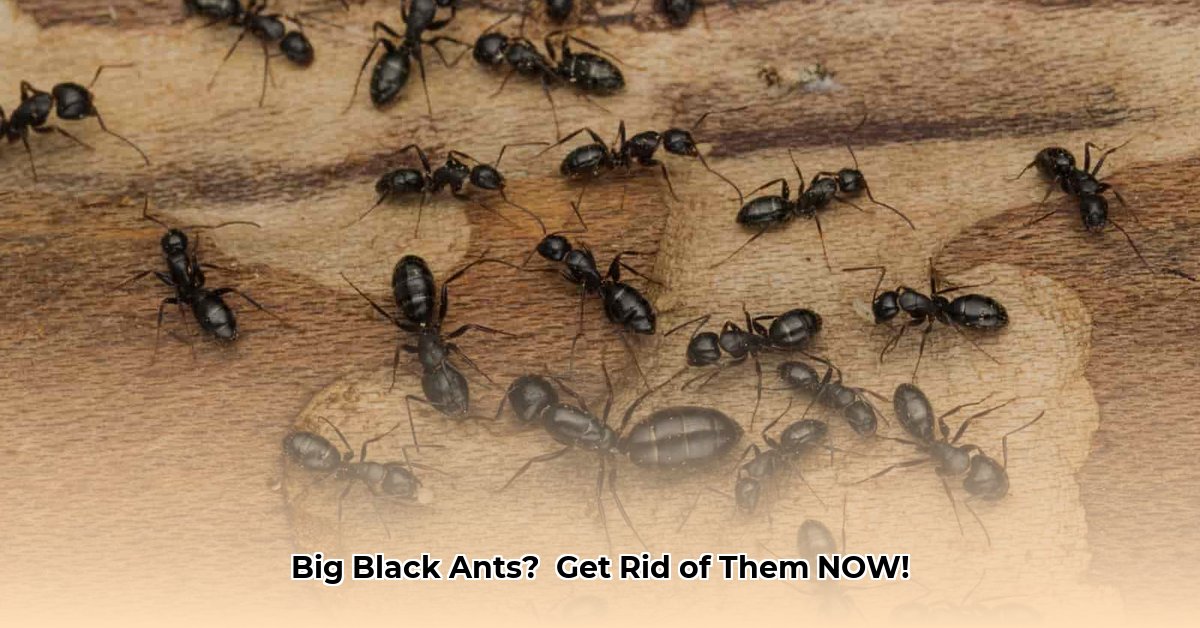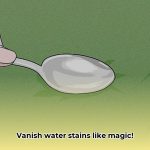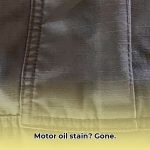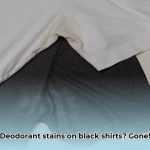So, you’ve spotted some hefty black ants marching around your home? Before you reach for the insecticide, let’s identify the intruders and devise a plan to send them packing. This guide will be your trusted advisor, breaking down the differences between carpenter ants (the bad news bears) and common black ants, guiding you through eradication, and offering prevention tips.
Pinpointing the Perpetrator: Quick Ant ID
A proper diagnosis is the first step to a cure. This visual guide differentiates carpenter ants from their less destructive cousins, black house ants:
| Feature | Carpenter Ant | Black House Ant |
|---|---|---|
| Size | 1/4″ – 5/8″ (pencil eraser to a dime) | 1/16″ – 1/8″ (a sprinkle) |
| Shape | Segmented body, thin waist, heart-shaped head | Segmented body, thin waist, oval-shaped head |
| Location | Near damp or damaged wood (window frames, sinks) | Near food sources (kitchen counters, pantry) |
Evicting the Invaders: Eradication Guides
Carpenter Ants: A Targeted Approach
Carpenter ants can wreak havoc on your home’s structure. Locating their nest is crucial for effective eradication.
1. Find the Nest: These ants often nest within walls, floors, or even the roof. Look for “frass,” a sawdust-like material mixed with insect parts—a telltale sign of carpenter ant activity. Tapping on walls and listening for hollow sounds might also indicate their presence.
2. Baiting Strategies: Borax-based baits are a slow-acting but effective solution. Worker ants carry the bait back to the colony, spreading the borax and eventually eliminating the population. Placement is key – position baits near ant trails, but not directly on them.
3. Spraying Techniques: Non-repellent sprays act as an invisible weapon. Ants walk through the spray unknowingly, carrying the insecticide back to the colony. Remember to follow label instructions and prioritize safety.
4. When to Call a Pro: Large infestations or nests hidden deep within structures might require professional intervention. Pest control experts have the tools and expertise to tackle even the toughest cases. Ongoing research suggests that certain environmental conditions may influence carpenter ant behavior, making professional advice even more valuable.
Black House Ants: Disrupting the Raid
While less destructive than carpenter ants, black house ants are still unwelcome guests.
1. Baiting with Sweets: These ants have a sweet tooth. Sugary baits are highly effective in luring them in and disrupting their foraging patterns.
2. Strategic Spraying: Target entry points and ant trails with non-repellent sprays to discourage re-entry and disrupt their communication.
3. Cleanliness is Key: Ants are attracted to food and water sources. Eliminate crumbs, spills, and standing water to make your home less appealing. Store food in airtight containers and regularly empty trash cans.
Prevention: Building a Fortress Against Ants
Prevention is the best defense. Implement these measures to keep ants at bay:
-
Sealing Entry Points: Caulk cracks and crevices around windows, doors, and pipes. Repair damaged screens to eliminate potential entry points.
-
Moisture Control: Ants thrive in damp environments. Address leaks and ensure proper ventilation to create a less hospitable environment.
-
Wood Debris Removal: Store firewood away from the house and remove rotting wood or stumps to eliminate potential nesting sites.
Understanding the Damage: Carpenter Ants and Your Home
Carpenter ants excavate wood to build nests, potentially weakening your home’s structure over time. While they don’t consume wood like termites, their tunneling can compromise structural integrity, particularly in damp or decaying wood. Early detection and treatment are vital to minimize damage.
Frequently Asked Questions (FAQ)
-
What’s the cost of professional treatment? Costs vary depending on the infestation severity and your location. Obtaining multiple quotes from reputable pest control companies is recommended.
-
Are there natural repellents? Vinegar, essential oils, and diatomaceous earth may deter ants, but their effectiveness in eliminating large infestations is limited. They might serve as temporary deterrents, but consistent reapplication is likely necessary.
-
Can I make my own ant traps? A mixture of borax and sugar water creates a simple yet effective DIY ant trap. Exercise caution when using borax around pets and children.
Regional Variations
Ant species and control methods can vary regionally. Consulting local university extension offices or pest control professionals familiar with your area can provide tailored advice.
By following this guide, you’ll be well-equipped to identify, eradicate, and prevent ant infestations. A proactive approach combined with consistent preventative measures will help you maintain an ant-free home.
- How to Measure Your Belt Size (for Women): 3 Easy & Accurate Methods - April 27, 2025
- How to Remove Permanent Hair Dye From Hair: Safe & Effective Methods - April 27, 2025
- How to Remove Ink from Leather: Effective DIY Methods and Expert Tips - April 27, 2025










